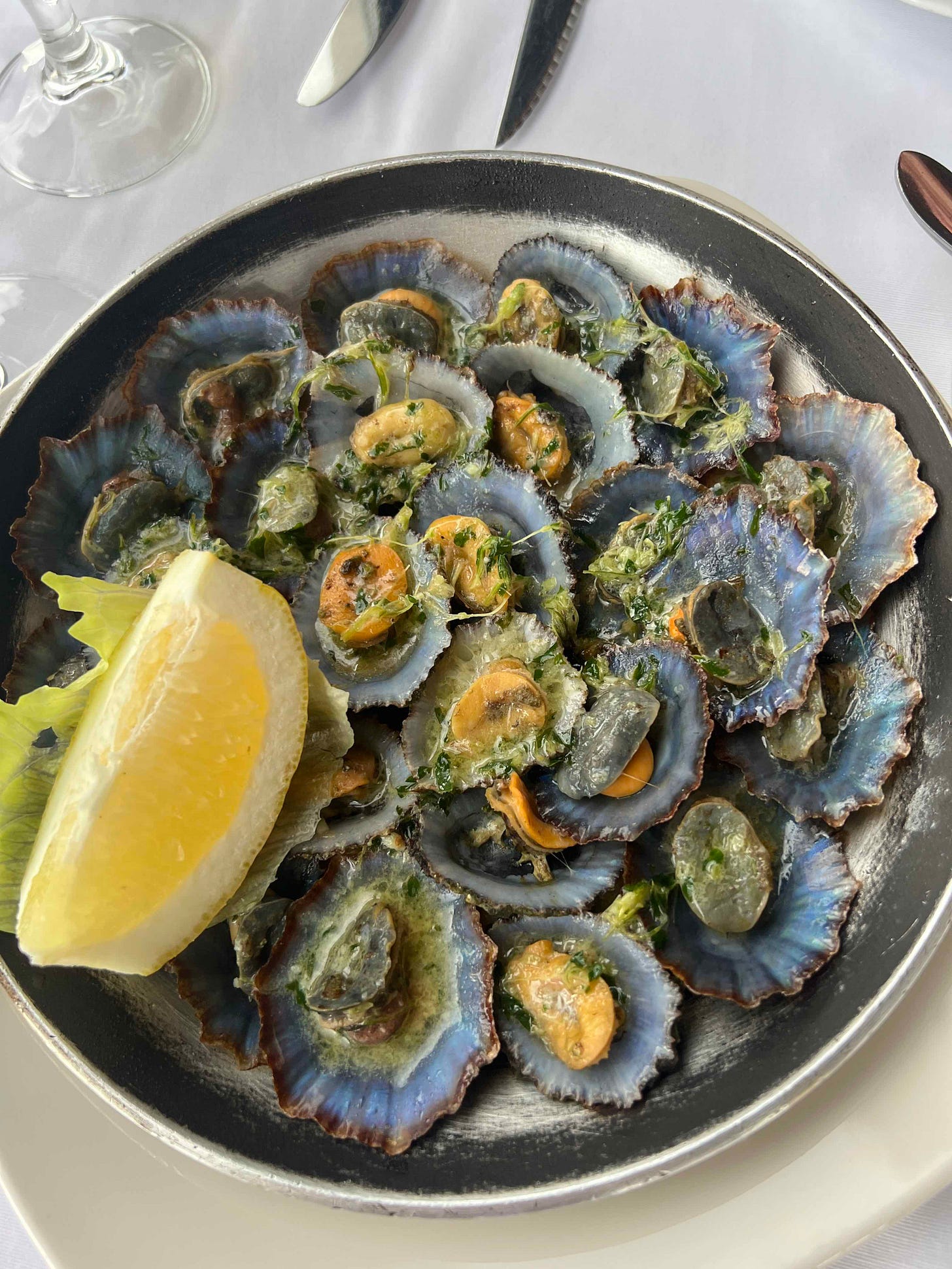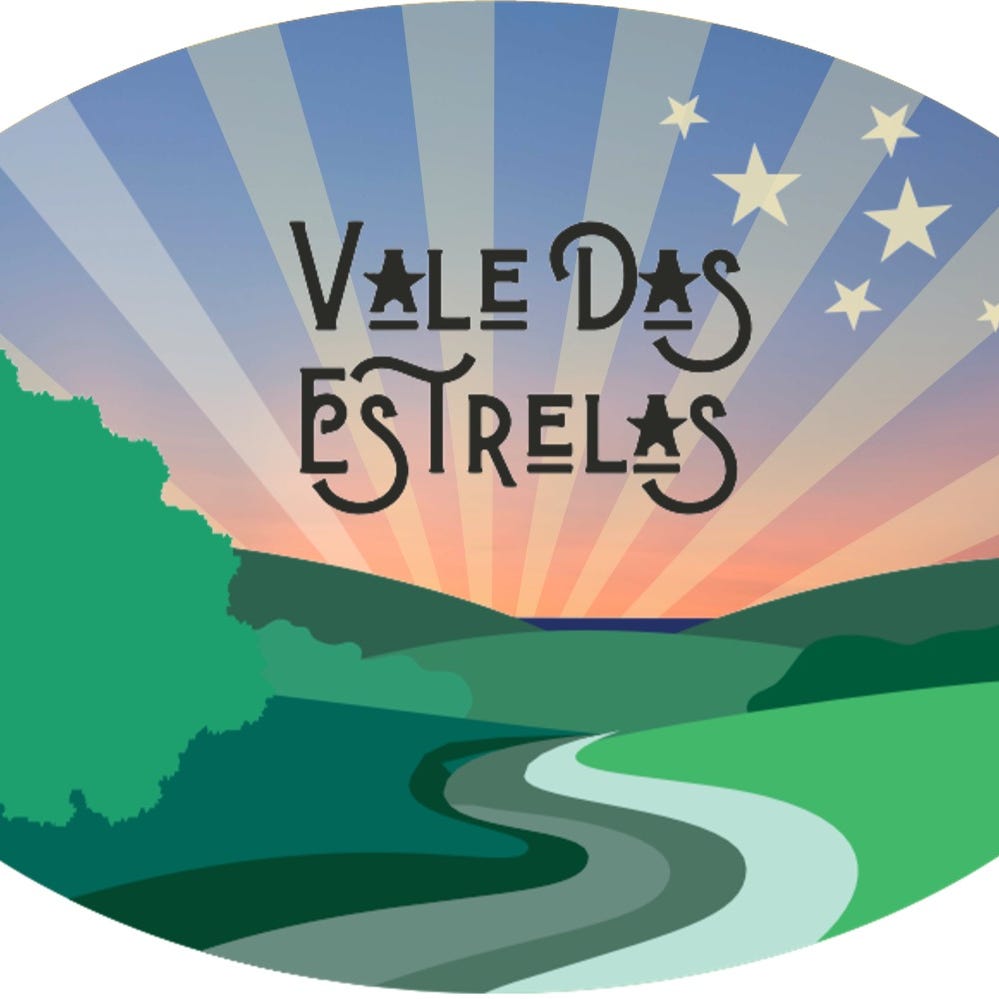This week’s despatch comes from a place with more tunnels, more goals and more hiking trails per head of population than anywhere else on earth.
They offer street tobogganing but have no snow, boast some of the highest cliffs in the world, and use trees to make wine.
Do you know where it is yet?
It’s never too hot and never too cold in this subtropical floral paradise; they serve fish with bananas and drink sugar cane liquor but aren’t in the Caribbean...
And with one of the most challenging airports to land on, pebble and black sand beaches and a penchant for eating limpets...they have a whole category of wine named after them.
Yes, I took my dear Ana to Madeira for her fiftieth birthday...and in a rare success of secret-keeping, managed to hide her celebratory holiday destination until we boarded the plane.
And what a fantastic island it turns out to be.
Just ninety minutes after leaving Lisbon (and at only €80 a head with a bit of notice) the passengers were applauding a smooth landing on this small volcanic rock that juts out of the Atlantic Ocean.
Soon we were motoring along a highway hugging the coastline, passing through tunnels in the cliffs and over bridges above deep, lush ravines.
Small houses and narrow-terraced banana plantations balanced on the steep hillsides as waterfalls emerged from the cloud-covered mountains above, gathering pace and strength and flowing down gradually widening channels to the sea below.
Madeira is the biggest of four islands that constitute this autonomous region of Portugal. Porto Santo is the only other one that’s inhabited.
Desertas speaks for itself and Selvagens (Wild) gives you the general idea.
Rain was forecast and it wasn’t going to disappoint: the biggest storm in the whole Atlantic was heading right for us and lighting up my newly discovered weather app Ventusky (thanks Niels).
Amid a showery prelude to the main event we wandered the capital Funchal which is crammed onto a flatter and more sheltered southern part of the island, with its suburbs spreading up the mountain and ascending into the mist.
Two large cruise ships towered over the small port and a battered old seafront fort of fading yellow led us to the old city with its tight alleyways of bar and restaurant tourist traps.
Funchal has a sculptured colonial feel to it very different from mainland Portugal, with beautifully manicured gardens of exotic sub-tropical plants and trees and neat calçada (cobbled) squares, narrow streets and wide avenues lined with flowering jacarandas.
The São Martinho area on the cliffs west of Funchal is home to luxury hotels like Reid’s Palace and the occasional Michelin starred restaurant, but we opted for more affordable fancy.
I guess we’re spoilt by sunshine and so enjoyed the cosiness of the tempest as it battered swaying palm trees and provided a dramatic backdrop for a lovely birthday lunch involving scallops, steak and wine from our Alentejo homeland.

When I saw the CR7 signs I thought it was some kind of highway, but of course it was a hotel and museum devoted to the living legend and local Madeirense boy Cristiano Ronaldo who wears a seven on his shirt.
I haven’t done extensive research, but with a population of around 250,000 people his 800 goals have to give Madeira more goals per head than anywhere else.
But in terms of CR7, I’m sure it’s better to dedicate museums to people once they’re dead, and for me it was enough to have passed through the Cristiano Ronaldo airport and seen his sculpture. I get it, he’s from here.
We didn’t go to the museum, but the more we explored the more it became clear he had inspired the many fancy football fields inhabiting treasured flat land on all corners of the island.
In terms of tunnels, there are more than 150, which is a lot per head for a place that’s no more than 50km across and 20km wide.
The longest stretch thousands of metres and they cost billions of euros...courtesy of European Union membership.
Tunnels helped a tourism industry already selling a temperate climate and the thousands of kilometres of levada walking trails that follow old irrigation channels cut into cliff faces.
Madeira has gone from one of the poorest to one of the richest parts of Portugal in a generation, even if inequality means many people still live very simply.
The debts from lavish spending brought the island and Portugal to the brink of default after the 2008 crash – but that’s another story.
The tunnels began as exciting additions to our trip, but with the exception of some intriguing road signs, became a disappointment...because you can’t see much of the island from inside a tunnel.
The steep winding roads they replaced are mostly now unpassable and ruined: overgrown, blocked by rockfalls or eroded into the ocean.
There are still a few wonderfully steep and winding roads up into the mountains or down to the narrow strips of beach towns – and even a couple of teleférico cable cars that take locals down to their fields and tourists on an aerial adventure.
The biggest is in Funchal, ferrying passengers from the port to the botanical gardens high up the mountain.
And as for the way back, carriero do monte is the only way to travel: wicker toboggans for two that are guided down the steep and polished streets by a couple of drivers dressed all in white and wearing boater hats standing at the back of the wooden sleds.
Although we didn’t try it, we got a good idea of the experience after getting a bit lost and finding ourselves driving on their track – following one of them as it slid gracefully down the hill.

We explored as much as we could – staying a couple of nights on the northern and western edges of the island and not missing out on the espade (sword or scabbard fish with banana), the grilled lapas (limpets) and the local wine.
Like Port, Madeira is fortified with a brandy and ranges from aperitif dry to dessert sweet depending on the grape.
With huge thanks to Chris Blandy and Portuguese wine writer Richard Mayson we were treated to a tour of Blandy’s Wine Lodge and two hundred years of the family’s history on Madeira complete with a tasting.
With time running out, and much still to say, I will save the details about the difference between Malvasia, Buol, Verdelho and Sercial for our other newsletter – Ana & Al’s Big Portuguese Wine Adventure.
We’re travelling Portugal gathering material for our podcast series and are discovering some amazing people and places along the way – please sign up below!
Grapes in Madeira are grown on frames much higher than in many places – above head height – because it’s so humid this protects them from fungus.

A lot of grapes grow in the north and all but one of the Madeira houses are in Funchal – over the mountains.
Pre-tunnels the wine would be carried in goat skins to be fortified in the capital and then shipped abroad.
And given the natural resources on hand it’s not surprising they used trees in the winemaking process – huge trunks levered with a clever screw system to press piles of grape skins and stalks wrapped in rope.

And the booze? We saved the poncha (sugar cane spirit with honey, sugar and orange or lemon juice) for our return, to share with our fantastic neighbour Daniel who looked after Simon & Garfunkel throughout, who was in it all along (and didn’t spill the secret), and who suggested Madeira in the first place! Good call – and thanks vizinho!













I have an abiding memory of going down that Funchal 'carriero do monte' when the ship we were travelling to England in, stopped at Madeira in 1958. I was six but remember we stopped halfway down to sup on a glass of wine, and the bearers/runners wore white breechs with red ribbons at the knee and long white socks. I wonder why shipping would have stopped there in those days?